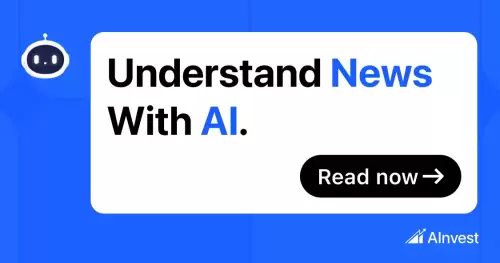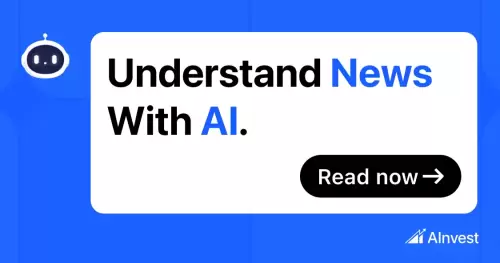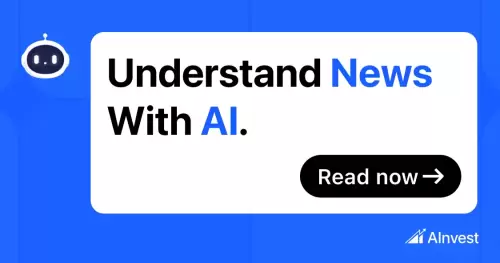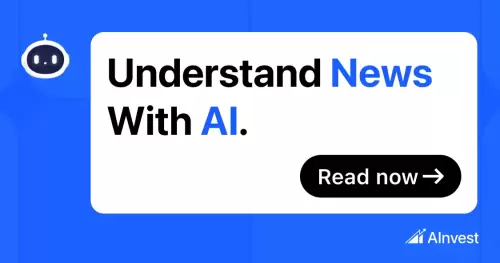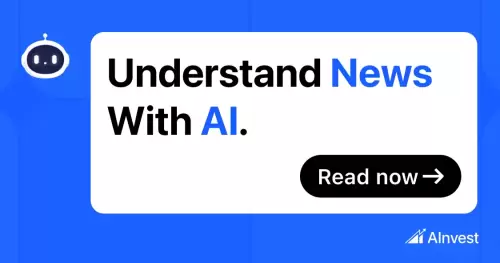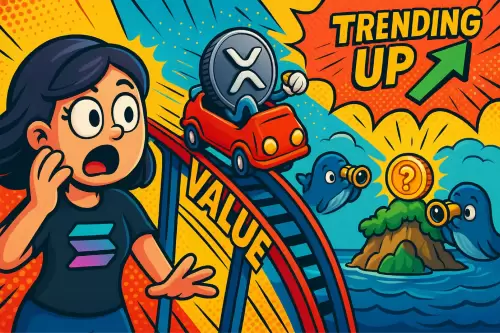 |
|
 |
|
 |
|
 |
|
 |
|
 |
|
 |
|
 |
|
 |
|
 |
|
 |
|
 |
|
 |
|
 |
|
 |
|
互联网和移动设备的现代技术曾经是民主和解放工具,已成为监视和利润的引擎,重塑社会

Modern technology, often heralded as a tool for democracy and liberation, has become largely an engine of surveillance and profit, reshaping society to benefit corporations more than communities. As Alex Karp argues in The Technical Republic, the engineering focus has shifted from deep tech that strengthens societies to consumer tech that serves corporate interests.
现代技术通常被宣告为民主和解放的工具,在很大程度上已成为监视和利润的引擎,使社会重塑社会比社区更受益。正如亚历克斯·卡普(Alex Karp)在技术共和国所说的那样,工程重点已经从增强社会的深度技术转变为为企业利益的消费者技术。
Artificial intelligence, now poised to reshape society, stands at a crossroads: will it follow this path or chart a new one.
现已准备重塑社会的人工智能站在一个十字路口上:它会遵循这条道路或绘制新的道路。
Crypto, promised as a decentralized revolution, has largely failed to deliver, mired in speculation and unfulfilled promises. However, a new opportunity emerges: decentralized artificial intelligence. By combining crypto’s infrastructure with AI’s transformative potential, we can redeem crypto’s vision and ensure AI serves the greater good, not corporate greed.
被保证为一场分散革命的加密货币在很大程度上未能交付,陷入了猜测和未实现的承诺。但是,出现了新的机会:分散的人工智能。通过将加密货币的基础设施与AI的变革潜力相结合,我们可以兑现加密货币的愿景,并确保AI有助于更大的利益,而不是公司贪婪。
The problem: Crypto’s stumbles and AI’s peril
问题是:加密的跌倒和AI的危险
Blockchains and cryptocurrency promised to disrupt industries by eliminating middlemen and streamlining systems like finance and supply chains. Bitcoin (BTC) and stablecoins have found traction, but smart contracts, once revolutionary, have fueled mostly speculative DeFi projects and meme coins rather than real-world solutions. The gap between crypto’s ambition and reality has eroded trust.
区块链和加密货币有望通过消除中间人和精简系统(如金融和供应链)来破坏行业。比特币(BTC)和Stablecoins已经发现了牵引力,但是曾经革命性的智能合约主要助长了投机性的Defi项目和模因硬币,而不是现实世界中的解决方案。加密态度与现实之间的鸿沟侵蚀了信任。
AI could end up reshaping everything—from healthcare and science to the way we govern society. But when just a few companies control that kind of power, there’s a real risk of deepening inequality, increasing surveillance, and even steering public opinion.
AI最终可能会重塑一切,从医疗保健和科学到我们管理社会的方式。但是,当只有少数公司控制这种权力时,就会存在加深不平等,增加监视甚至指导公众舆论的真正风险。
If you look back, technologies like the internet or nuclear energy were developed with heavy government involvement. That’s not the case with AI. It’s largely in the hands of private corporations now, and that brings up a pressing question: Is this technology being built for the common good, or just for profit? Without intervention, AI could follow social media’s path, exploiting users rather than empowering them.
如果您回顾过去,诸如互联网或核能之类的技术是通过大量政府参与而开发的。 AI并非如此。现在,这主要掌握在私人公司的手中,这提出了一个紧迫的问题:这项技术是为共同利益而建立的,还是只是为了利润?没有干预,AI可以遵循社交媒体的道路,利用用户而不是赋予他们权力。
Why decentralization is essential for AI
为什么权力下放对于人工智能至关重要
The breakthrough here is not just technical, but also economic. In decentralized AI networks, every layer of the AI value chain can be distributed in real time. Data custodians who supply datasets, model architects who publish improved weights, and application builders who deliver user experiences can all earn a proportional share of on-chain rewards. Because every transaction settles on a public blockchain, everyone can audit who earned what and why, creating radical accountability that proprietary labs cannot match.
这里的突破不仅是技术,而且是经济。在分散的AI网络中,可以实时分发AI值链的每个层。提供数据集的数据保管人,发布改进的权重的模型建筑师以及提供用户体验的应用程序建筑商都可以在链上奖励中获得成比例的份额。因为每笔交易都会在公共区块链上解决,所以每个人都可以审核谁赢得了什么和原因,创建了专有实验室无法匹配的根本问责制。
This structure unlocks a level of collaborative and competitive velocity impossible inside a single company. Thousands of independent nodes iterate in parallel, stress-testing and improving upon one another’s ideas and forking the best into new sub-networks. Breakthroughs, therefore, compound rapidly instead of waiting for a quarterly roadmap.
这种结构可以在单个公司内部解锁一定程度的协作和竞争速度。成千上万的独立节点并行迭代,压力测试和改善彼此的想法,并将最佳的方式分配到新的子网络中。因此,突破迅速复合,而不是等待季度路线图。
In short, decentralization rewires AI’s incentives so that rewards and governance flow to the true value creators rather than bottling up inside a single balance sheet. That alignment is the difference between an AI future owned by a handful of companies and one that belongs to all of us.
简而言之,权力下放会重新定义AI的激励措施,以使奖励和治理流向真实价值创造者,而不是在单个资产负债表中装瓶。这种一致性是少数公司拥有的AI未来和属于我们所有人的AI未来之间的区别。
Decentralized AI in action
分散的AI行动
Bittensor is one of the examples of decentralized AI solutions. Bittensor is a live, open network where crypto-economic incentives translate directly into better AI. Independent nodes post tasks, share weights, and benchmark one another’s output. Every interaction is logged on-chain, and contributors are paid in native token Bittensor (TAO) or subnet tokens the moment their work moves the frontier forward.
Bittensor是分散AI解决方案的例子之一。 Bittensor是一个现场开放的网络,加密经济激励措施直接转化为更好的AI。独立节点发布任务,共享权重和彼此的输出基准。每次互动都会在链上记录,并且贡献者以本地令牌Bittensor(TAO)或子网令牌的方式支付,而他们的工作将前沿前进的那一刻。
BitMind, in this economic flywheel, plays the role of a deepfake detector. A swarm of computer-vision models hunts manipulated images and video. Each week, peer nodes re-score one another, and detectors that outperform earn larger rewards. The result is an 88% detection rate, nearly twenty points higher than leading proprietary tools, and real-time adaptation when new deepfake techniques appear.
Bitmind在这种经济飞轮中,扮演着深泡探测器的角色。一群计算机视觉模型搜索操纵的图像和视频。每周,同伴节点互相重新得分,并且远景的探测器获得了更大的回报。结果是88%的检测率,比领先专有工具高近20点,并且当出现新的DeepFake技术时实时适应。
Moreover, instead of one lab dictating what a language model should be, Templar, a decentralized model training, lets anyone supply data, compute, or architectures to optimize training loss. The subnets’ validators determine algorithmically which contributions improve performance, and rewards flow accordingly.
此外,圣殿骑士,分散的模型培训不是一个实验室,而是让任何人提供数据,计算或体系结构来优化培训损失。子网的验证器通过算法确定哪些贡献可以改善性能,并相应地奖励。
What binds these projects is the same incentive loop: every incremental improvement, whether a cleaner dataset, an improved model, or improved performance, earns its contributor a larger share of emissions. Open-source altruism finally has a sustainable business model.
束缚这些项目的是相同的激励循环:每一个增量改进,无论是清洁器数据集,改进的模型还是改进的性能,都会为其贡献者提供更大的排放份额。开源利他主义终于具有可持续的商业模式。
Crypto promised to democratize money but got lost in speculation. Decentralized AI redeems this vision by creating a sustainable incentive and economic model for open-source AI development. If large-scale generalized intelligence will shape the next century, ensuring its rewards are broadly shared may become crypto’s most important, and most achievable legacy.
加密货币承诺将资金民主化,但在投机中迷失了方向。分散的AI通过为开源AI开发创建可持续的激励和经济模式来兑现这一愿景。如果大规模的广义情报将在下一个世纪塑造,那么确保其奖励得到广泛共享可能会成为加密货币最重要,最能实现的遗产。
Ken Jon Miyachi is the co-founder of BitMind, a company at the forefront of developing pioneering deepfake detection technology and decentralized AI applications. Prior to founding BitMind, Ken served as a software engineer and technical lead at leading organisations such as NEAR Foundation, Amazon, and Polymer Labs, where he honed his expertise in scalable technology solutions. He has written several academic research publications on blockchain from his work at the
Ken Jon Miyachi是BitMind的联合创始人,BitMind是一家开发开拓性的DeepFake检测技术和分散的AI应用程序的最前沿的公司。在创立BitMind之前,Ken曾在近基金会,亚马逊和Polymer Labs等领先组织的软件工程师和技术负责人,在那里他磨练了他在可扩展技术解决方案方面的专业知识。他从他的工作中写了几本关于区块链的学术研究出版物
免责声明:info@kdj.com
所提供的信息并非交易建议。根据本文提供的信息进行的任何投资,kdj.com不承担任何责任。加密货币具有高波动性,强烈建议您深入研究后,谨慎投资!
如您认为本网站上使用的内容侵犯了您的版权,请立即联系我们(info@kdj.com),我们将及时删除。
-

- AltCoin轮换,智能货币和投资趋势:有什么交易?
- 2025-08-04 12:00:48
- 深入探讨山寨币轮换,智能货币运动以及加密货币的最新投资趋势。发现哪些山寨币在浪潮以及原因。
-

-

-

- XRP Price,Ripple CTO和令牌金融:加密货币的纽约分钟
- 2025-08-04 11:43:30
- Ripple的XRP在监管辩论和象征性的财务趋势中表现出了韧性,其CTO和市场分析师的主要见解。
-

- PI硬币:未来访问还是早期采用蓝调?
- 2025-08-04 11:42:37
- Pi硬币是未来财务的金票,还是另一个面临早期采用逆风的加密项目?让我们潜入嗡嗡声。
-

- 以太坊清算岩石加密市场:纽约人要做什么?
- 2025-08-04 11:41:44
- 随着清算潮的激增,以太坊受到了打击。这是blip还是更广泛的趋势?我们分解了最新的加密市场戏剧及其对您的意义。
-

-

- 比特币的看涨扩展:解码布林乐队和鲸鱼赌注
- 2025-08-04 09:31:57
- 比特币的价格接近$ 114,000,因为贸易商眼球乐队为看涨的突破。大鲸鱼下注为火灾增加了燃料。比特币会爆炸还是燃烧?
-

- XRP,Solana和Whales:解码加密潮汐
- 2025-08-04 09:30:07
- 深入探讨XRP,Solana和Whale活动的动态世界,揭示了塑造加密货币市场的最新趋势和见解。
























































